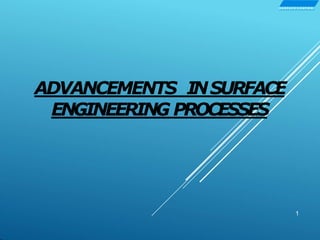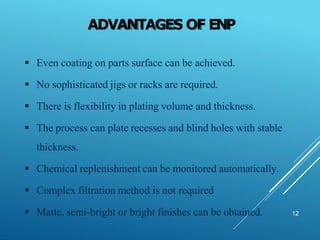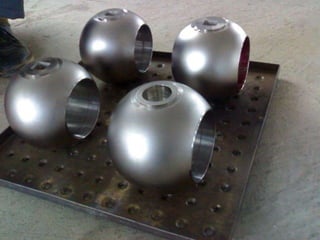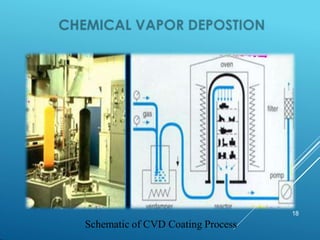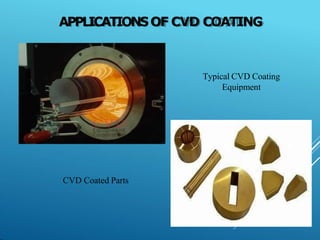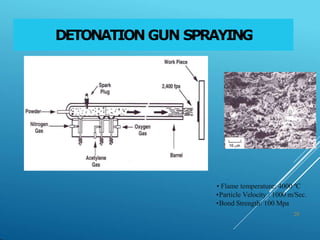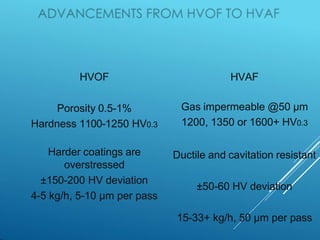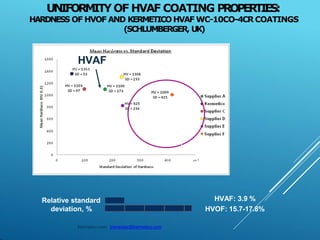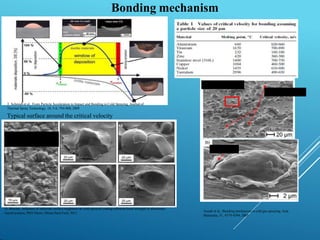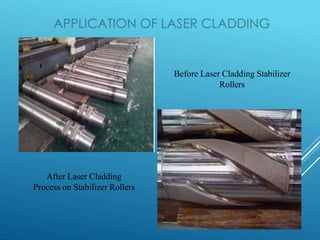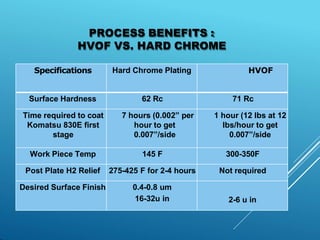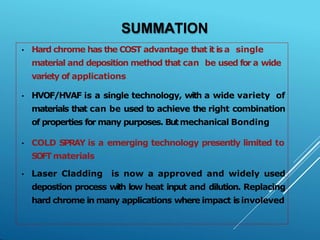The document provides an overview of surface engineering processes and their timeline of development. It discusses various nitriding, plating, thermal spraying, and coating processes such as gas nitriding, plasma nitriding, hard chrome plating, electroless nickel plating, physical vapor deposition, chemical vapor deposition, high-velocity oxy-fuel spraying, high-velocity air-fuel spraying, detonation gun spraying, plasma spraying, and cold spraying. It provides details on the process, applications, advantages, and issues with some of these surface modification techniques.
